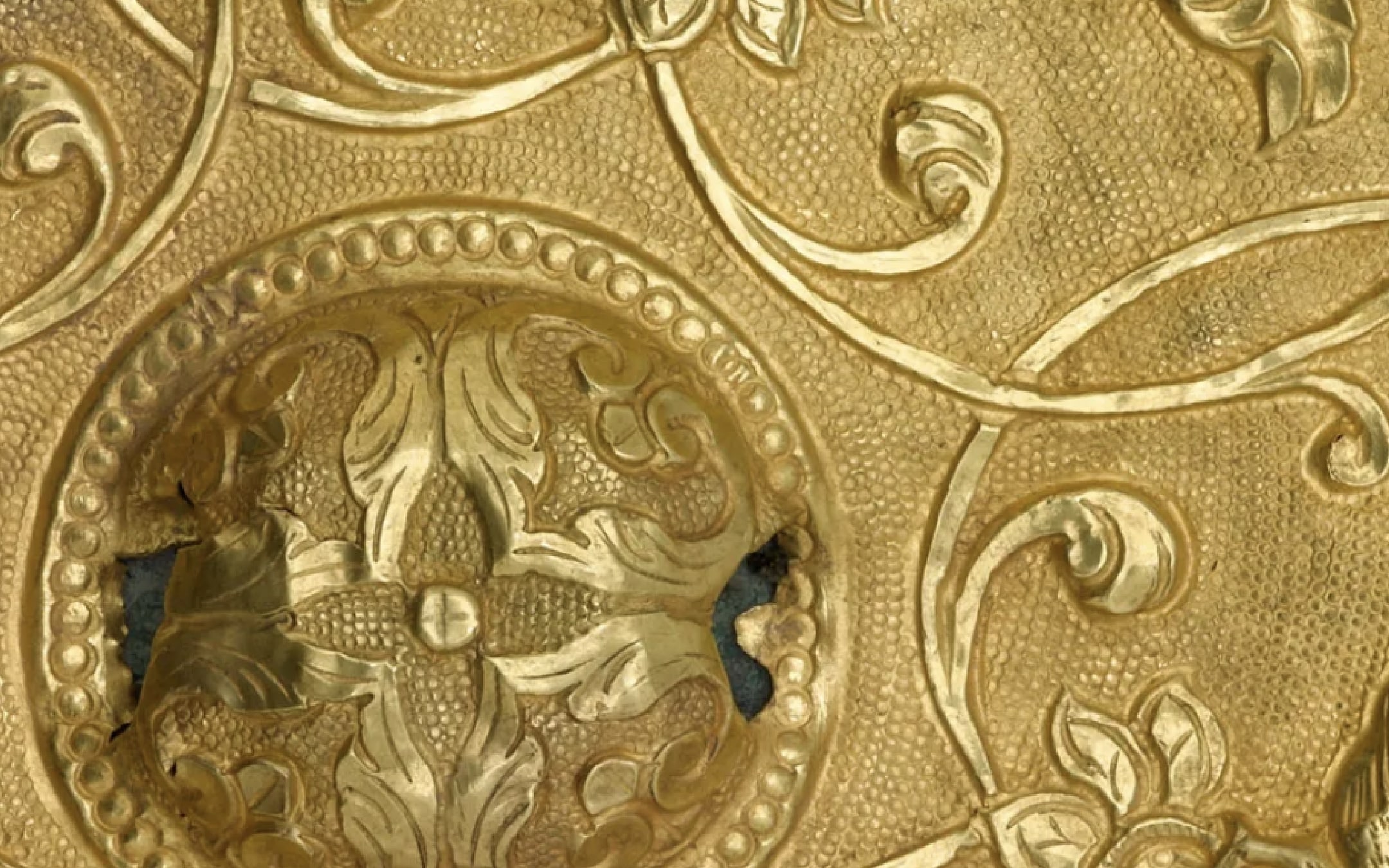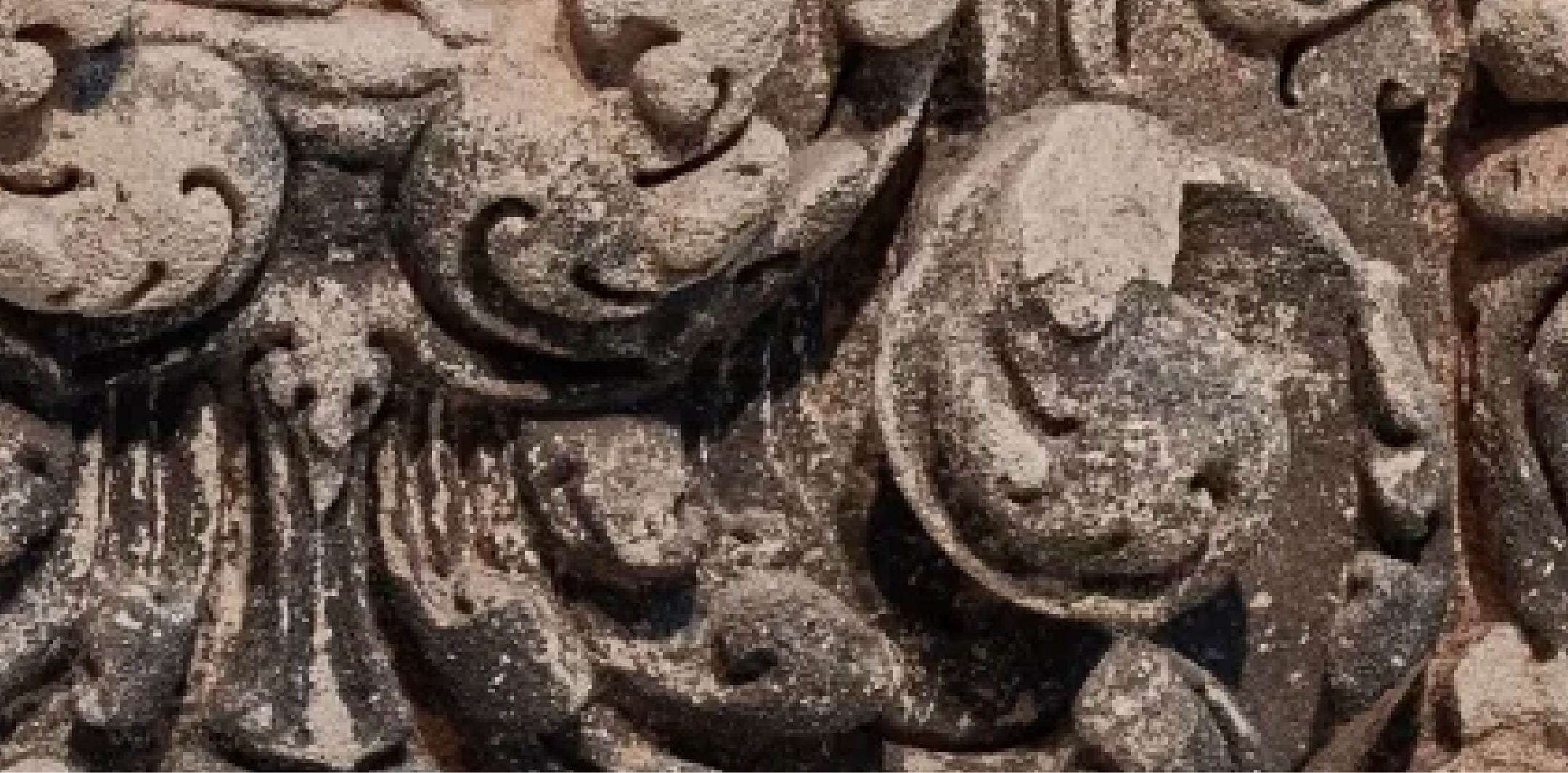
Oxford, Bodleian Library, MS. Junius 11, pp. 84-5
Ink on parchment; ff. 116; 320-325 x 180-190mm
Biblical poetry; English
England (Canterbury?); ca. 1000
Of the four major sources of Old English poetry, the Junius manuscript is the only one to contain an extensive cycle of pictures. The alliterative poems it preserves—testimony to the precocious development of vernacular religious literature in Anglo-Saxon England—are paraphrases of biblical narratives: “Genesis A”; “Genesis B,” an interpolation derived from an Old Saxon poem on the Fall of the Rebel Angels and of Man; “Exodus”; “Daniel”; and “Christ and Satan.” The attractive but unlikely connection with the seventh-century illiterate herdsman Caedmon of Whitby, whose miraculous poetic gifts are recorded by Bede, was first made by Francis Junius, the pioneering philologist who acquired the manuscript in the seventeenth century. The manuscript may be identifiable in the early-fourteenth-century library catalogue of Christ Church, Canterbury—though this does not constitute proof that the manuscript was produced there. A medallion portrait on p. 2 of the manuscript is inscribed “Aelfwine” and appears to depict a layman, but too little is known about the relations between lay patrons and monastic book producers at this period to be certain of its significance.
Much of Genesis is illustrated with an extensive but incomplete series of drawings. In the later parts of Genesis, and throughout Exodus and Daniel, spaces were left by the scribe for drawings that were never inserted. No such spaces were left in the text of Christ and Satan. Two distinct styles can be identified in the drawings. The first artist uses brown and red inks with occasional washes, and draws figures in a firm outline. The second artist, whose work is shown here, draws with red, blue, and green inks in a lighter, sketchier, and more fluent style. It has been observed that text and pictures do not proceed smoothly together from page to page; sometimes they are jarringly out of step. Some scholars have inferred that the artists were struggling to adapt earlier cycles of biblical illustrations to the particular demands of this vernacular version. The composition of the drawings must in reality have involved a complex mixture of borrowing, adaptation, and invention.
Page 87 (above right) illustrates Abraham building an altar (top) and making an offering (center), and the Lord appearing to Abraham (bottom). The drawing on p. 84 (above left) illustrates three crucial moments in the relationship between God and Abraham (Genesis 12:1-7), employing a vivid vocabulary of gesture. In the top register the beardless figure of God commands Abraham to leave his home in Haran, watched from Abraham’s house on the right by Sarah and Lot. In the middle register Abraham leads Sarah, Lot, and their followers into the land of Canaan. Finally, God returns to announce that he will give the land to Abraham’s seed. The Anglo-Saxons drew parallels between their own migration from the European continent to England and the journeys of the Israelites, identifying themselves as a chosen people under God’s protection. Their royal genealogies traced their ancestry back to the Old Testament patriarchs, and their law codes contained extensive quotations from the Pentateuch.
Author
Dr. Martin Kauffmann
Assistant Librarian, Department of Special Collections and Western Manuscripts, Bodleian Library, University of Oxford
Bibliography
Summary Catalogue, 1895-1953, no. 5123; Gollancz, 1927 (facsimile); Krapp, 1931; Ker, 1957, no. 334; Evans, 1963; Pächt and Alexander, 1966-73, vol. 3, no. 34; Henderson, 1975; Blum, 1976; Hall, 1976; Raw, 1976; Temple, 1976, no. 58; Doane, 1978; Lucas, 1979; Bergman, 1980, pp. 13, 25-27, 31-35, 45-47; Lucas, 1980-81; Broderick, 1983; Raw, 1984; Doane, 1991; Ohlgren, 1992, no. 16; Amtower, 1993; Lucas, 1994; Zimmermann, 1995; Remley, 1996; Lucas, 2000; Liuzza, 2002; Muir, 2004 (digital facsimile).


